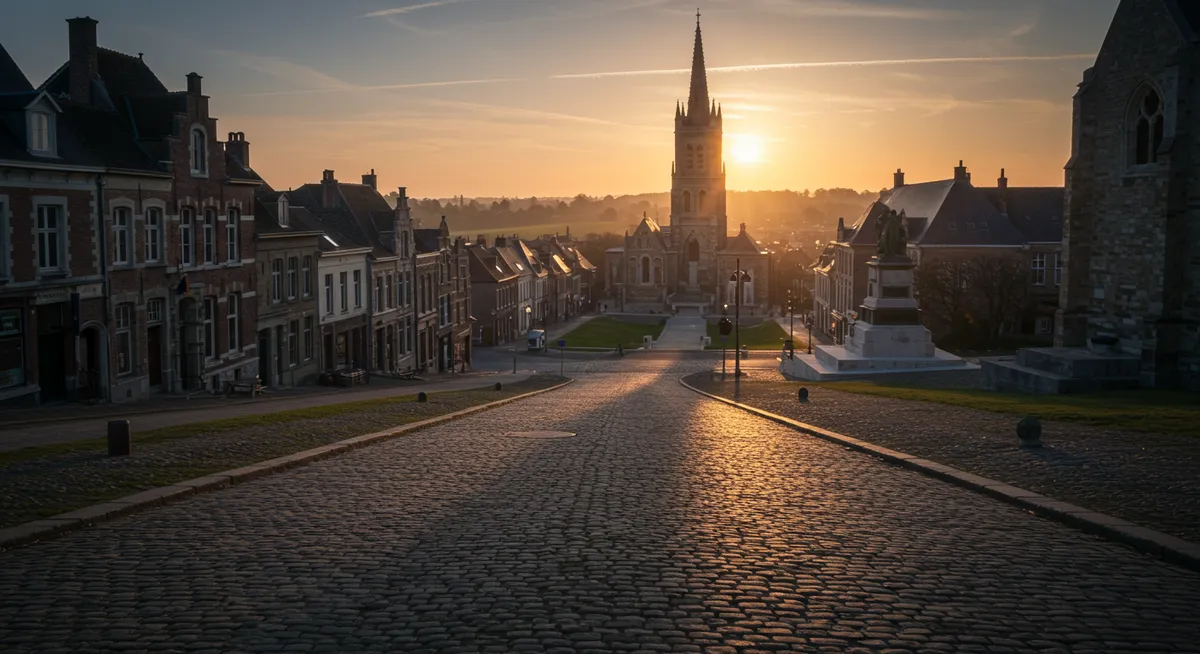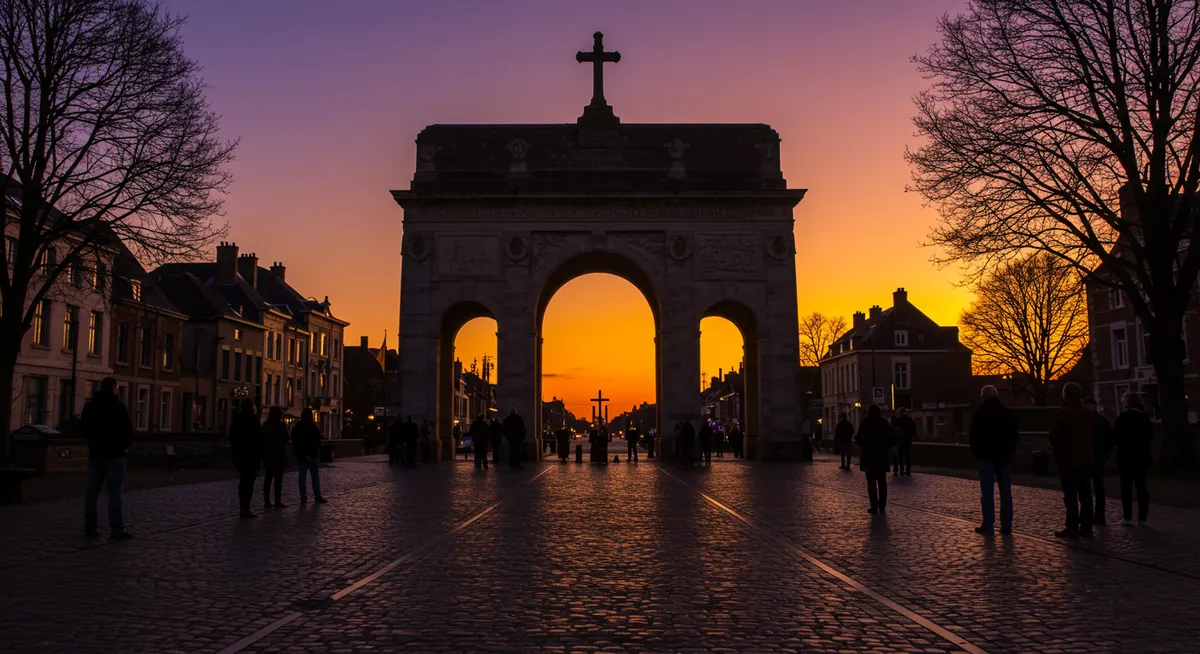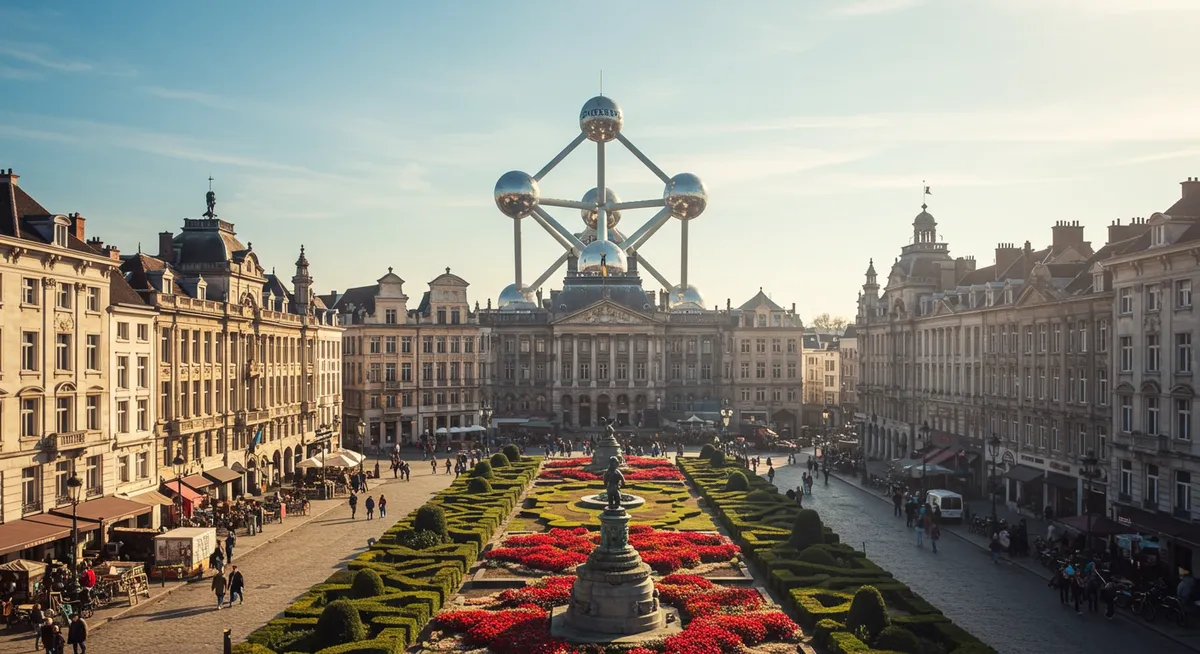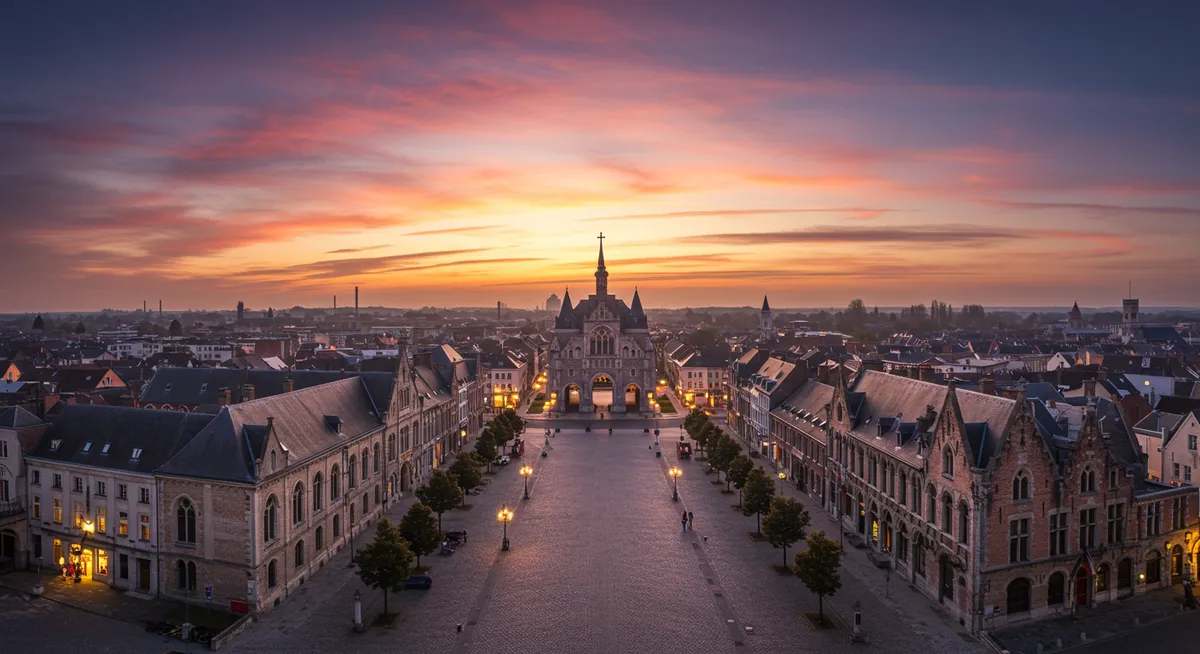
The Perfect Ypres Itinerary
Want to plan a trip based on this article? Chat with our AI travel assistant!
Chat with AI AssistantCategory: ypres-itinerary
About the Author
Travel Expert & Content Creator
Our travel experts have visited hundreds of destinations worldwide and are passionate about sharing authentic, practical travel advice. With years of experience in travel planning and content creation, we help travelers make informed decisions and create unforgettable journeys.
Editorial Standards: All articles are reviewed for accuracy and quality before publication. Learn more about our editorial process.
Written by Editor | Last updated: 1/15/2025
The Ultimate Ypres Itinerary
Planning a trip to Ypres in 2025 and wondering how to best experience this historic Belgian city? Ypres, a city steeped in history and remembrance, offers a unique blend of poignant war memorials, fascinating museums, and charming Belgian culture. This meticulously crafted Ypres itinerary provides a comprehensive guide for exploring the city's most significant sites, whether you have three or five days.
In 2025, Ypres continues to be a focal point for those seeking to understand the impact of World War I, while also offering a glimpse into the resilience and rebirth of a city almost completely destroyed. Our guide details not only a day-by-day plan but also covers essential planning aspects such as transportation, accommodation, and the best times to visit. For those seeking organized tours, explore options for Ypres day tours. Discover things to do in Ypres, Ypres experiences and Ypres activities to enhance your visit. Uncover the key Ypres attractions and Ypres highlights.
Whether you're a history buff, a cultural explorer, or simply seeking a meaningful travel experience, our Ypres itinerary is designed to help you make the most of your visit. Start planning your journey today and delve into the heart of Ypres. Visit our Homepage for more inspiration!
1. How to Get to Ypres
Planning your trip to Ypres? Getting there is straightforward, with several convenient options. For international travelers, Brussels Airport (BRU) is the most accessible major airport, offering numerous connections worldwide. From Brussels, you can take a direct train to Ypres, which typically takes around 1.5 to 2 hours. Alternatively, consider flying into Lille Airport (LIL) in France, which is closer to Ypres but may require a bus or train connection to reach your final destination. If you are already in Europe, high-speed train lines connect Brussels to major cities like Paris and London, making Ypres easily reachable. Once you arrive in Belgium, local trains provide reliable service to Ypres.
For those preferring to drive, Ypres is well-connected by major highways. From Brussels, take the E40 towards Ostend, then connect to the A19 towards Ypres. Driving offers the flexibility to explore the surrounding areas at your own pace, but be mindful of parking regulations within the city. Bus services are also available, though they may involve longer travel times. No matter which mode of transport you choose, planning your route in advance will ensure a smooth and stress-free journey to this historic city. Remember to check for any travel advisories or updates before you set off. If you're looking for Ypres Activities, consider booking in advance to save time.
2. How to Get Around Ypres
Navigating Ypres is relatively straightforward, thanks to its compact size and well-maintained infrastructure. The city center is easily walkable, making it ideal for exploring historical sites and soaking in the atmosphere. For those who prefer cycling, numerous bike rental services are available, allowing you to venture further into the surrounding countryside at your own pace. Alternatively, consider utilizing the local bus network, which connects Ypres with nearby towns and attractions. Moreover, taxis are readily accessible for convenient transportation, especially during evenings or when traveling with luggage. Discover Ypres Activities or Ypres Attractions to make your experience more easier. No matter your chosen method, getting around Ypres is designed to enhance your overall travel experience.

3. Where to Stay in Ypres
Finding the right accommodation is essential for a comfortable and memorable visit to Ypres. The city offers a variety of options, from charming boutique hotels in the heart of the city to cozy bed and breakfasts nestled in the surrounding countryside. Staying within the city center provides easy access to Ypres' main attractions, such as the Menin Gate and In Flanders Fields Museum. Alternatively, consider a stay in the peaceful outskirts to experience the serene beauty of the Ypres Salient. Guesthouses and farm stays offer a more intimate experience, allowing you to immerse yourself in the local culture. Regardless of your choice, booking in advance is highly recommended, especially during peak season. For more information on Ypres Attractions, see our page.
4. When to Visit Ypres
The best time to visit Ypres largely depends on your priorities. Summer (June-August) offers the warmest weather, ideal for exploring outdoor sites and attending the Last Post Ceremony under clear skies. However, this is peak tourist season, so expect larger crowds and higher prices. Spring (April-May) and autumn (September-October) provide pleasant temperatures and fewer tourists, making for a more intimate experience. Consider visiting in November for Remembrance Day to witness poignant ceremonies, although the weather can be unpredictable. Winter (November-March) sees the fewest visitors, and some attractions may have limited hours, but the atmosphere can be particularly reflective. Ultimately, the ideal time balances weather preferences with the desire for fewer crowds and specific commemorative events. So plan your trip according to what you value most and see the beauty that Ypres has to offer.

5. How Many Days in Ypres is Ideal
Deciding how many days to spend in Ypres depends on your interests and how deeply you want to explore the area's history and surroundings. For a comprehensive experience, three days is generally recommended. This allows you to thoroughly explore the main historical sites within the city, attend the Last Post Ceremony at the Menin Gate, and venture out to key battlefields and cemeteries in the surrounding area. However, even a well-planned two-day visit can cover the essentials, especially if you focus on the most significant memorials and museums.
If you have more time, consider extending your stay to four or five days. This will allow for a more relaxed pace and the opportunity to visit less-crowded sites and explore further afield. Ultimately, the ideal duration depends on your personal connection to the history and the level of detail you wish to engage with during your visit. No matter how long you stay, you can find things to do in Ypres to fill your time.
6. Day 1 in Ypres: Remembrance and Reflection
Morning Activities
Begin your journey in Ypres with a poignant visit to the In Flanders Fields Museum. Located in the heart of Ypres, this museum offers an immersive experience that chronicles the story of World War I in the Westhoek region. Allow at least three hours to fully absorb the exhibits, which include artifacts, personal stories, and interactive displays. Consequently, you’ll gain a deeper understanding of the human cost of war. After your museum visit, take a moment to reflect at the Menin Gate Memorial, an imposing structure that bears the names of thousands of missing soldiers. As a result, it serves as a powerful reminder of the sacrifices made.
Midday Exploration & Lunch
Following your morning of remembrance, explore the historic Grote Markt (Market Square). Admire the beautifully reconstructed buildings that surround the square, a testament to Ypres' resilience. Next, enjoy a traditional Belgian lunch at one of the many local restaurants. For example, try a hearty stew or some delicious mussels. Afterward, take a leisurely walk along the ramparts, offering scenic views of the city and the surrounding countryside. Indeed, this provides a tranquil contrast to the somber atmosphere of the war memorials. Finally, consider exploring more things to do in Ypres during your midday break.
Afternoon Adventures
In the afternoon, delve deeper into the history of the Great War with a visit to the Tyne Cot Cemetery, the largest Commonwealth war cemetery in the world. Walking through the endless rows of white headstones is a sobering experience. Following this, continue to the nearby Passchendaele Memorial Museum 1917 to gain further insights into the infamous Battle of Passchendaele. This museum provides a detailed account of the battle, showcasing the brutal conditions faced by soldiers. For more organized exploration, check out Ypres day tours for guided experiences.
Evening Experiences
As evening descends, prepare for the moving Last Post Ceremony at the Menin Gate. This ceremony takes place every evening at 8 pm and has been a daily tradition since 1928 (except during WWII). It is a deeply respectful tribute to the soldiers who gave their lives. After the ceremony, enjoy a quiet dinner in Ypres. Perhaps sample some local Belgian beers. Reflect on the day's experiences and the profound history you have encountered. Consider exploring Ypres Attractions for additional evening activity ideas.
Insider Tips & Final Thoughts
For a more personalized experience, consider visiting smaller, lesser-known cemeteries and memorials around Ypres. These sites often offer a more intimate atmosphere for reflection. Also, be sure to check the opening hours of museums and memorials in advance, especially during the off-season. As you conclude your first day, remember the importance of honoring the past while embracing the present. Ypres is not only a city of remembrance but also a vibrant community with a rich culture. You may also want to check out Ypres Experiences for unique cultural immersion opportunities. Moreover, Ypres Activities may provide additional insights into planning your itinerary.

Day 2 in Ypres: Delving Deeper into History
Morning Activities
Begin your second day in Ypres by visiting the In Flanders Fields Museum. After all, this is a must-see to gain a comprehensive understanding of World War I. Delve into interactive exhibits and personal stories that bring the past to life. Afterward, take a short walk to the Ypres Ramparts Cemetery, a peaceful resting place with poignant stories etched in stone. From there, continue to the nearby Menin Gate to witness the daily Last Post Ceremony preparations. So, reflect on the sacrifices made as you prepare for a day filled with historical exploration.
Midday Exploration & Lunch
Following a morning of reflection, explore the charming streets of Ypres. Furthermore, you can discover local shops and cafes. For lunch, try a traditional Flemish stew at a local restaurant. Next, make your way to the Bellewaerde Ridge British Cemetery. It commemorates battles fought nearby. Also, consider Ypres day tours for guided exploration. Afterwards, enjoy a peaceful walk through the countryside, reflecting on the day's experiences.
Afternoon Adventures
In the afternoon, venture slightly outside Ypres to visit the Tyne Cot Cemetery, the largest Commonwealth War Graves cemetery in the world. Spend time walking among the thousands of headstones. Reflect on the scale of the conflict. Then, head to the nearby Passchendaele 1917 Museum. Experience recreated trenches and learn about the infamous Battle of Passchendaele. For things to do in Ypres, explore more historical sites and museums.
Evening Experiences
As evening approaches, return to Ypres and prepare for a solemn experience at the Menin Gate. Attend the daily Last Post Ceremony at 8 PM. It is a moving tribute to the soldiers who died in World War I. Additionally, this moving ceremony provides a moment of reflection. Following the ceremony, enjoy a quiet dinner at a local bistro. Reflect on the day's historical journey.
Insider Tips & Final Thoughts
To maximize your experience, consider visiting the cemeteries and memorials during off-peak hours. Consequently, you can avoid crowds and fully appreciate the somber atmosphere. Remember, comfortable shoes are essential for walking. Check out Ypres Experiences. The second day in Ypres offers a deeper understanding of the region's history. Moreover, it allows for personal reflection. Explore Ypres Activities to complete your visit. Remember, Ypres Attractions and Ypres Highlights add to your understanding of Ypres' rich history.
8. Day 3 in Ypres: Exploring Beyond the City Walls
On your third day in Ypres, venture outside the city walls to discover more of the region's poignant history. Begin with a visit to Tyne Cot Cemetery, the largest Commonwealth war cemetery in the world, a truly moving experience. Afterward, explore the nearby village of Passendale, now known as Passchendaele, and visit the Passchendaele 1917 Memorial Museum to gain further insight into the brutal battles fought here. Following lunch, consider a trip to Hill 60, a preserved battlefield site where you can walk through original trenches and learn about the strategic importance of this location. Alternatively, take one of the Ypres day tours to broaden your knowledge of the area. In the evening, return to Ypres for a relaxing dinner, reflecting on the day's experiences and the immense sacrifices made during the war. As you plan out things to do in Ypres remember to take into account travel times between locations.

9. Day 4 in Ypres (Optional): Discovering the Salient
If you have an extra day in Ypres, consider venturing further into the Ypres Salient, the area surrounding the city that saw some of the most intense fighting during World War I. Begin with a visit to Hill 62 (Sanctuary Wood), where you can explore preserved trenches and a small museum. Next, head to Hooge Crater Cemetery and Museum to understand the impact of underground warfare. For lunch, find a local eatery in one of the nearby villages.
In the afternoon, continue to Bellewaerde Ridge, another strategically important location with preserved battlefields. Reflect on the immense sacrifices made as you explore the area. If you're interested in Ypres day tours, this might be the perfect opportunity to explore more efficiently. This deeper dive offers a profound understanding of the Things to do in Ypres, extending beyond the city itself.
10. Day 5 in Ypres (Optional): Peace and Reflection
If you've chosen to extend your stay, Day 5 in Ypres offers a more contemplative experience. Begin with a visit to the Tyne Cot Cemetery, the largest Commonwealth war cemetery in the world. Spend time reflecting on the immense scale of loss and sacrifice. Afterward, consider a quiet walk through the serene Hooge Crater Cemetery, which features a preserved crater from the battles. Perhaps explore the nearby Hill 62 - Sanctuary Wood, a preserved trench system offering a tangible sense of the war's conditions. For a deeper understanding, Ypres Experiences can further contextualize the history. End the day with quiet reflection, processing the profound history you've encountered during your stay, as you think of Things to do in Ypres.
Following this Ypres itinerary ensures you'll experience the heart of this historic city, paying homage to its past while appreciating its present. Begin planning your unforgettable Ypres adventure today and discover the poignant beauty and resilience of this remarkable destination!Following this Ypres itinerary ensures you'll experience the heart of this historic city, paying homage to its past while appreciating its present. Begin planning your unforgettable Ypres adventure today and discover the poignant beauty and resilience of this remarkable destination!
Content Quality Assurance
This article has been thoroughly researched and fact-checked by our editorial team. We maintain high standards for accuracy and originality in all our content.
Related Articles

One Day Ypres WWI Itinerary for Visitors
Plan your one day Ypres WWI itinerary with this comprehensive guide for 2024. Discover key battlefields, museums, and the moving Last Post ceremony.

Brussels Itinerary: See the Best in 2025
The ultimate Brussels itinerary for 2025! Perfect for 3 or 5 days, with insider tips, must-see attractions, and day-by-day plans. Plan your dream trip now!

Ypres Highlights: Top Attractions
Discover the essential Ypres highlights for 2025. From war memorials to historical landmarks, explore must-see attractions in this poignant city. Plan your visit now!